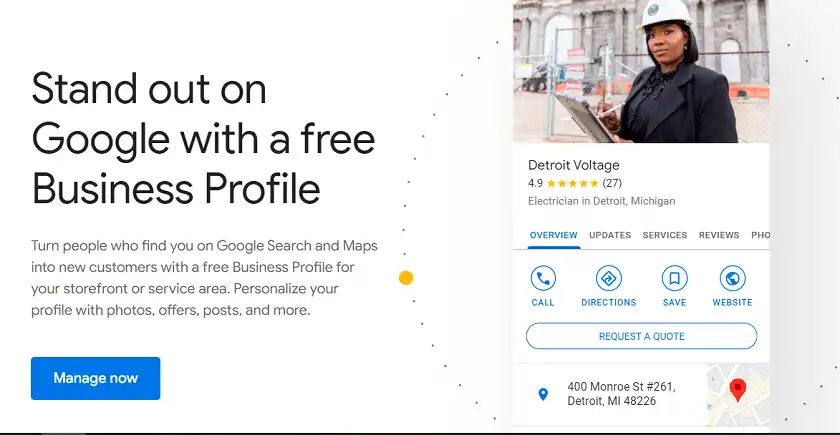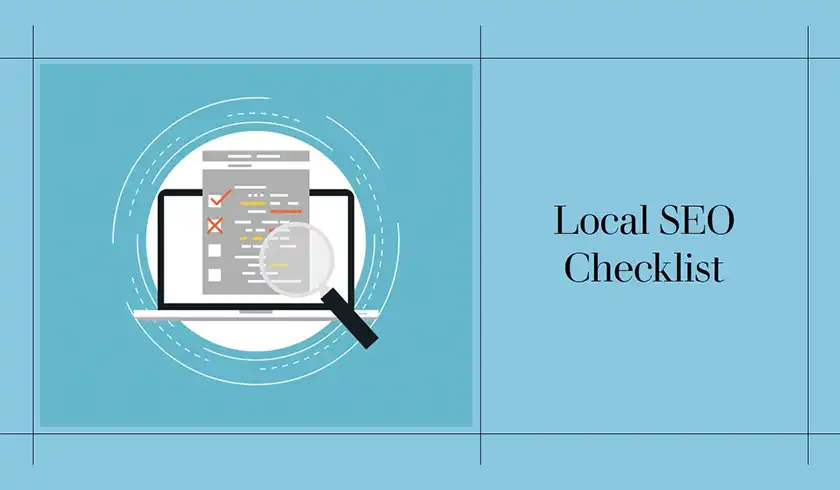Having a strong online presence is crucial for businesses, particularly those with a physical location or catering to local customers. This is where local SEO comes into play. It’s the practice of optimizing your online content and presence to rank higher in location-based search results.
Why is Local SEO so important? According to Google, 46% of all searches have local intent and a staggering 88% of consumers who search for a local business on their smartphone visit that business within a week. Therefore, a strong local SEO strategy can drive more traffic, leads, and conversions to your business.
This complete local SEO checklist is designed for brick-and-mortar businesses, service providers with local areas of operation, and multi-location businesses. By following these steps, you’ll be well on your way to boosting your local search visibility and attracting more customers from your community.
Local SEO Checklist #1: Foundation & Set-Up
1. Keyword Research for Local SEO
The foundation of any successful SEO strategy starts with keyword research. In the context of local SEO, you’ll want to identify high-intent keywords that include location modifiers or zip codes, such as “best plumber near me” or “emergency locksmith [city].” These keywords indicate that the searcher has a specific local intent and is likely ready to make a purchase or hire a service.
Utilize tools like Google Keyword Planner, SEMrush, and Moz Keyword Explorer to uncover relevant local keyword ideas. Pay close attention to the user intent behind each search query – is it informational (e.g., “plumbers near me”), navigational (e.g., “Bob’s Plumbing [city]”), or transactional (e.g., “hire a plumber [city]”)? Understanding intent will help you craft content and optimize your website accordingly.
2. Claim and Optimize Your Google My Business Profile

Your Google My Business (GMB) profile is your virtual storefront in the world of local search. Creating a complete and informative GMB profile is essential, as this is often the first impression potential customers will have of your business.
Start by verifying ownership of your GMB listing and ensuring all information (business categories, hours, services, attributes) is accurate and up-to-date. Leverage high-quality photos, virtual tours, and detailed product/service lists to make your listing stand out. Respond promptly to customer reviews, both positive and negative, to demonstrate your commitment to excellent service and online reputation management.
Don’t forget to highlight your unique selling points (USPs) in your GMB profile, and consider adding regular GMB posts and offers to keep your listing fresh and engaging.
3. NAP Consistency Across the Web
NAP stands for Name, Address, and Phone Number – the core information that helps customers find and contact your business. Ensuring consistent NAP information across all platforms (your website, citations, social media, and online directories) is crucial for local SEO success.
Leverage major data aggregators like Acxiom, Neustar Localeze, and Factual to distribute your NAP information to various online directories and business listings. Actively monitor and update your NAP citations regularly using tools like Moz Local, Yext, or BrightLocal to maintain accuracy and consistency.
Local SEO Checklist #2: Content & On-Page Optimization
1. On-Page Optimization for Local Search
Optimize your website’s title tags, meta descriptions, header tags, and body copy with relevant local keywords to signal to search engines that your content is relevant for location-based searches. Create dedicated location-specific content pages and localized blog posts that cater to your target audience (e.g., “The Ultimate Guide to Plumbing in [City]“).

Alt text & ImageSEO-YOAST
Don’t forget to optimize your images with locally descriptive alt text and file names, and implement local business schema markup to provide additional context and structured data for search engines.
2. Building High-Quality Local Content
Engaging, informative content is a cornerstone of any successful SEO strategy, and local SEO is no exception. Create blog posts, guides, and other content that directly targets your local audience and addresses their needs and interests.
Showcase your expertise and establish yourself as a local authority in your industry by incorporating local events, news, partnerships, and community involvement into your content strategy. Utilize location data like city names, neighborhoods, and local landmarks to make your content more relatable and relevant.
Consider interviewing local influencers or industry leaders for contributed content to add an extra layer of local flavor and credibility to your blog.
3. Mobile-Friendly Website and User Experience
With the majority of local searches happening on mobile devices, ensuring a mobile-friendly website and user experience is crucial. Prioritize mobile responsiveness, fast loading speeds, and easy navigation on smaller screens.

Implement click-to-call buttons, directions, and other local intent satisfiers to make it easier for mobile users to take action and engage with your business. Conduct regular mobile-friendliness tests using Google’s tools and consider implementing Accelerated Mobile Pages (AMP) for even faster mobile experiences.
Local SEO Checklist #3: Link Building & Promotion
1. Local Link-Building Strategies
Backlinks from high-authority local websites, blogs, and publications can significantly boost your local search rankings. Pursue listings on relevant online directories like Yelp, YellowPages, and Angie’s List, as well as local Chamber of Commerce listings and event sponsorships or speaking opportunities.
Partner with complementary local businesses for cross-promotion and link exchanges, and consider guest blogging on local websites and industry publications to build high-quality backlinks and establish your brand as a local leader.
Another effective tactic is localized resource page link building, where you create valuable, locally relevant resource pages and reach out to other websites to include links to your content.
2. Building Online Reviews and Reputation Management

Positive online reviews are a powerful trust signal for local businesses, so it’s essential to have a strategy in place for actively encouraging and managing customer reviews.
Encourage customers to leave reviews on your Google My Business listing, as well as other popular review platforms like Yelp and Facebook. Respond promptly and professionally to both positive and negative reviews, demonstrating your commitment to customer satisfaction.
Utilize review management tools or services to monitor and respond to reviews across multiple platforms efficiently. Consider offering incentives or implementing a structured review acquisition strategy to generate more reviews and boost your online reputation.
3. Leveraging Social Media for Local Promotion
Social media platforms like Facebook, Instagram, and Twitter offer excellent opportunities for local promotion and engagement. Create engaging, locally-focused content and leverage location tags, geofilters, and local hashtags to increase your visibility within your community.
Run targeted local social media ads and promotions to reach potential customers in your area. Consider hosting social media contests and giveaways to generate local engagement and buzz around your brand.
Partnering with local influencers or community leaders for social media collaborations can also be an effective way to tap into their existing local following and further amplify your reach.
4. Track and Analyze Your Local SEO Performance
As with any marketing strategy, it’s crucial to track and analyze your local SEO performance to measure success and identify areas for improvement. Monitor your local search rankings using rank tracking tools like BrightLocal, and set up analytics to track website traffic from local searches.
Analyze your website’s traffic sources, user behavior, and conversion metrics to understand how local SEO efforts are impacting your bottom line. Utilize tools like Google Search Console and other local SEO reporting tools to gain deeper insights into your local search visibility and performance.
Implementing conversion tracking will allow you to directly tie revenue or leads generated to your local SEO efforts, providing a clear picture of your return on investment (ROI).
Summary
Remember, local SEO is an ongoing process, so continuous monitoring, optimization, and adaptation are key to maintaining your edge. Stay up-to-date with the latest local SEO best practices, and don’t hesitate to seek the expertise of local SEO professionals to take your strategy to the next level.
FAQ
How long does it take to see results from local SEO efforts?
The time it takes to see measurable results from local SEO can vary, but most experts agree that it typically takes 3-6 months of consistent effort and optimization to start seeing significant improvements in local search rankings and traffic.
Do I need to have a physical location to benefit from local SEO?
While having a physical storefront or office can certainly be advantageous for local SEO, it’s not an absolute requirement. Service-based businesses that operate within specific geographic areas (e.g., plumbers, electricians, landscapers) can also benefit greatly from a well-executed local SEO strategy.
How important are online reviews for local SEO?
Online reviews play a crucial role in local SEO success. Positive reviews not only act as a trust signal for potential customers but can also directly impact your local search rankings. Additionally, businesses that actively manage and respond to reviews (both positive and negative) tend to rank higher in local search results.
Should I focus on local SEO if my business has multiple locations?
Absolutely! Local SEO is extremely important for multi-location businesses and franchises. In this case, you’ll need to optimize your online presence and content for each individual location, ensuring consistent and accurate NAP (Name, Address, Phone Number) information across all locations. Consider implementing a local landing page strategy, where you create dedicated pages for each location to better target local audiences.
